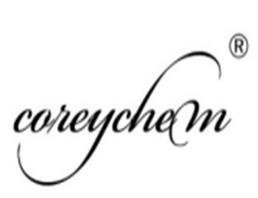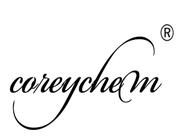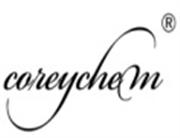1/1
Puromycin dihydrochloride
- Min. Order1kg
- Purity95%-99%
- Cas No58-58-2
- Supply Ability1000kg
- Update time2019-07-06

 China
China
Since:2014-12-17
Address:Zhengzhou High tech Zone, Henan Province, China



| Product Name | Puromycin dihydrochloride |
| CAS No | 58-58-2 |
| EC-No | |
| Min. Order | 1kg |
| Purity | 95%-99% |
| Supply Ability | 1000kg |
| Release date | 2019/07/06 |
Names
| [ Name ]: | Puromycin dihydrochloride hydrate |
|---|---|
| [ Synonym ]: | More Synonyms |
Chemical & Physical Properties
| [ Density ]: | 1.5±0.1 g/cm3 |
|---|---|
| [ Molecular Formula ]: | C22H29N7O5 |
| [ Molecular Weight ]: | 471.510 |
| [ Exact Mass ]: | 471.223022 |
| [ PSA ]: | 160.88000 |
| [ LogP ]: | 0.93 |
| [ Index of Refraction ]: | 1.701 |
MSDS
Synonym: 3'- SECTION 2 - COMPOSITION, INFORMATION ON INGREDIENTS
Risk Phrases: None Listed. SECTION 3 - HAZARDS IDENTIFICATIONEMERGENCY OVERVIEW The toxicological properties of this material have not been fully investigated. Potential Health Effects Eye: May cause eye irritation. Skin: May cause skin irritation.
Ingestion: May cause irritation of the digestive tract. Inhalation: May cause respiratory tract irritation. Chronic: Laboratory experiments have resulted in mutagenic effects. SECTION 4 - FIRST AID MEASURES Eyes: Flush eyes with plenty of water for at least 15 minutes, occasionally lifting the upper and lower eyelids. Get medical aid immediately. Skin: Get medical aid. Flush skin with plenty of water for at least 15 minutes while removing contaminated clothing and shoes. Wash clothing before reuse. Ingestion: If victim is conscious and alert, give 2-4 cupfuls of milk or water. Never give anything by mouth to an unconscious person. Get medical aid immediately. Inhalation: Remove from exposure and move to fresh air immediately. If not breathing, give artificial respiration. If breathing is difficult, give oxygen. Get medical aid. Notes to Physician: SECTION 5 - FIRE FIGHTING MEASURES General Information: As in any fire, wear a self-contained breathing apparatus in pressure-demand, MSHA/NIOSH (approved or equivalent), and full protective gear. During a fire, irritating and highly toxic gases may be generated by thermal decomposition or combustion. Extinguishing Media: Use agent most appropriate to extinguish fire. Use water spray, dry chemical, carbon dioxide, or appropriate foam. SECTION 6 - ACCIDENTAL RELEASE MEASURES General Information: Use proper personal protective equipment as indicated in Section 8. Spills/Leaks: Clean up spills immediately, observing precautions in the Protective Equipment section. Sweep up or absorb material, then place into a suitable clean, dry, closed container for disposal. Avoid generating dusty conditions. Provide ventilation. SECTION 7 - HANDLING and STORAGE Handling: Wash thoroughly after handling. Remove contaminated clothing and wash before reuse. Use with adequate ventilation. Minimize dust generation and accumulation. Avoid contact with eyes, skin, and clothing. Keep container tightly closed. Avoid ingestion and inhalation. Storage: Store in a tightly closed container. Store in a cool, dry, well-ventilated area away from incompatible substances. Hormones and antibiotics room. SECTION 8 - EXPOSURE CONTROLS, PERSONAL PROTECTION Engineering Controls: Facilities storing or utilizing this material should be equipped with an eyewash facility and a safety shower. Use adequate ventilation to keep airborne concentrations low. Exposure Limits CAS# 58-58-2: Personal Protective Equipment Eyes: Wear appropriate protective eyeglasses or chemical safety goggles as described by OSHA's eye and face protection regulations in 29 CFR 1910.133 or European Standard EN166. Skin: Wear appropriate protective gloves to prevent skin exposure. Clothing: Wear appropriate protective clothing to prevent skin exposure. Respirators: A respiratory protection program that meets OSHA's 29 CFR 1910.134 and ANSI Z88.2 requirements or European Standard EN 149 must be followed whenever workplace conditions warrant respirator use. SECTION 9 - PHYSICAL AND CHEMICAL PROPERTIES Physical State: Powder Color: White Powder Odor: None reported. pH: Not available. Vapor Pressure: Not available. Viscosity: Not available. Boiling Point: Not available. Freezing/Melting Point: Not available. Autoignition Temperature: Not available. Flash Point: Not available. Explosion Limits, lower: Not available. Explosion Limits, upper: Not available. Decomposition Temperature: Solubility in water: Specific Gravity/Density: Molecular Formula: C22H29N7O5.2HCl.xH2O Molecular Weight: 544.44 SECTION 10 - STABILITY AND REACTIVITY Chemical Stability: Stable under normal temperatures and pressures. Conditions to Avoid: Incompatible materials, dust generation, strong oxidants. Incompatibilities with Other Materials: Strong oxidizing agents. Hazardous Decomposition Products: Hydrogen chloride, nitrogen oxides, carbon monoxide, carbon dioxide, nitrogen. Hazardous Polymerization: Will not occur. SECTION 11 - TOXICOLOGICAL INFORMATIONRTECS#: CAS# 58-58-2: AU7355000 LD50/LC50: CAS# 58-58-2: Oral, mouse: LD50 = 720 mg/kg. Carcinogenicity: Puromycin dihydrochloride hydrate - Not listed by ACGIH, IARC, or NTP. Other: See actual entry in RTECS for complete information. SECTION 12 - ECOLOGICAL INFORMATION SECTION 13 - DISPOSAL CONSIDERATIONSDispose of in a manner consistent with federal, state, and local regulations. SECTION 14 - TRANSPORT INFORMATIONIATA Not regulated as a hazardous material. IMO Not regulated as a hazardous material. RID/ADR Not regulated as a hazardous material. SECTION 15 - REGULATORY INFORMATIONEuropean/International Regulations European Labeling in Accordance with EC Directives Hazard Symbols: Not available. Risk Phrases: Safety Phrases: S 24/25 Avoid contact with skin and eyes. S 28A After contact with skin, wash immediately with plenty of water. S 37 Wear suitable gloves. S 45 In case of accident or if you feel unwell, seek medical advice immediately (show the label where possible). WGK (Water Danger/Protection) CAS# 58-58-2: No information available. Canada None of the chemicals in this product are listed on the DSL/NDSL list. CAS# 58-58-2 is not listed on Canada's Ingredient Disclosure List. US FEDERAL TSCA CAS# 58-58-2 is not listed on the TSCA inventory. It is for research and development use only. SECTION 16 - ADDITIONAL INFORMATION MSDS Creation Date: 12/12/1998 Revision #2 Date: 3/18/2003 The information above is believed to be accurate and represents the best information currently available to us. However, we make no warranty of merchantability or any other warranty, express or implied, with respect to such information, and we assume no liability resulting from its use. Users should make their own investigations to determine the suitability of the information for their particular purposes. In no way shall the company be liable for any claims, losses, or damages of any third party or for lost profits or any special, indirect, incidental, consequential or exemplary damages, howsoever arising, even if the company has been advised of the possibility of such damages. SECTION 16 - ADDITIONAL INFORMATION N/A |
Toxicological Information
CHEMICAL IDENTIFICATIONRTECS NUMBER : AU7355000 CHEMICAL NAME : Adenosine, 3'-((2-amino-3-(4-methoxyphenyl)-1-oxopropyl)amino)-3 '-deoxy-N,N-dimethyl-, Dihydrochloride, (S)- CAS REGISTRY NUMBER : 58-58-2 LAST UPDATED : 199801 DATA ITEMS CITED : 11 MOLECULAR FORMULA : C22-H29-N7-O5.2Cl-H MOLECULAR WEIGHT : 544.50 WISWESSER LINE NOTATION : T56 BN DN FN HNJ IN1&1 D- BT5OTJ CQ DMVYZ1R DO1& E1Q &GH HEALTH HAZARD DATAACUTE TOXICITY DATATYPE OF TEST : LD50 - Lethal dose, 50 percent kill ROUTE OF EXPOSURE : Oral SPECIES OBSERVED : Rodent - mouse DOSE/DURATION : 720 mg/kg TOXIC EFFECTS : Nutritional and Gross Metabolic - weight loss or decreased weight gain Lungs, Thorax, or Respiration - respiratory depression Gastrointestinal - hypermotility, diarrhea TYPE OF TEST : LD50 - Lethal dose, 50 percent kill ROUTE OF EXPOSURE : Intraperitoneal SPECIES OBSERVED : Rodent - mouse DOSE/DURATION : 580 mg/kg TOXIC EFFECTS : Nutritional and Gross Metabolic - weight loss or decreased weight gain Lungs, Thorax, or Respiration - respiratory depression Gastrointestinal - hypermotility, diarrhea TYPE OF TEST : LD50 - Lethal dose, 50 percent kill ROUTE OF EXPOSURE : Intravenous SPECIES OBSERVED : Rodent - mouse DOSE/DURATION : 335 mg/kg TOXIC EFFECTS : Nutritional and Gross Metabolic - weight loss or decreased weight gain Lungs, Thorax, or Respiration - respiratory depression Gastrointestinal - hypermotility, diarrhea TYPE OF TEST : LD50 - Lethal dose, 50 percent kill ROUTE OF EXPOSURE : Oral SPECIES OBSERVED : Rodent - guinea pig DOSE/DURATION : 600 mg/kg TOXIC EFFECTS : Nutritional and Gross Metabolic - weight loss or decreased weight gain Behavioral - muscle weakness TYPE OF TEST : LD50 - Lethal dose, 50 percent kill ROUTE OF EXPOSURE : Intraperitoneal SPECIES OBSERVED : Rodent - guinea pig DOSE/DURATION : 287 mg/kg TOXIC EFFECTS : Nutritional and Gross Metabolic - weight loss or decreased weight gain Behavioral - muscle weakness TYPE OF TEST : LD50 - Lethal dose, 50 percent kill ROUTE OF EXPOSURE : Intramuscular SPECIES OBSERVED : Rodent - guinea pig DOSE/DURATION : 202 mg/kg TOXIC EFFECTS : Nutritional and Gross Metabolic - weight loss or decreased weight gain Behavioral - muscle weakness TYPE OF TEST : TDLo - Lowest published toxic dose ROUTE OF EXPOSURE : Intraperitoneal SPECIES OBSERVED : Rodent - rat DOSE/DURATION : 1 gm/kg/10D-I TOXIC EFFECTS : Behavioral - somnolence (general depressed activity) Gastrointestinal - hypermotility, diarrhea Nutritional and Gross Metabolic - weight loss or decreased weight gain TYPE OF TEST : TDLo - Lowest published toxic dose ROUTE OF EXPOSURE : Intramuscular SPECIES OBSERVED : Mammal - dog DOSE/DURATION : 150 mg/kg/3D-I TOXIC EFFECTS : Gastrointestinal - nausea or vomiting Related to Chronic Data - death TYPE OF TEST : DNA inhibition TYPE OF TEST : Mutation test systems - not otherwise specified MUTATION DATATEST SYSTEM : Rodent - mouse DOSE/DURATION : 100 mg/kg REFERENCE : FOBLAN Folia Biologica (Prague). (Academic Press Inc. Ltd., 24-28 Oval Rd., London NW1 7DX, UK) V.1- 1955- Volume(issue)/page/year: 21,60,1975 |
Safety Information
| [ Symbol ]: |  GHS07 |
|---|---|
| [ Signal Word ]: | Warning |
| [ Hazard Statements ]: | H302 |
| [ Personal Protective Equipment ]: | Eyeshields;Faceshields;Gloves;half-mask respirator (US);multi-purpose combination respirator cartridge (US) |
| [ Hazard Codes ]: | Xn |
| [ Risk Phrases ]: | R22 |
| [ Safety Phrases ]: | S36 |
| [ RIDADR ]: | UN 3249 |
| [ RTECS ]: | AU7355000 |
| [ Packaging Group ]: | III |
| [ Hazard Class ]: | 6.1(b) |
Company Profile Introduction
Established in 2014,Career Henan Chemical Co. is a manufacturerspecializing in the sale of fine chemicals. Mainly deals in the sales of: Pharmaceutical intermediates OLED intermediates: Pharmaceutical intermediates; OLED intermediates;



